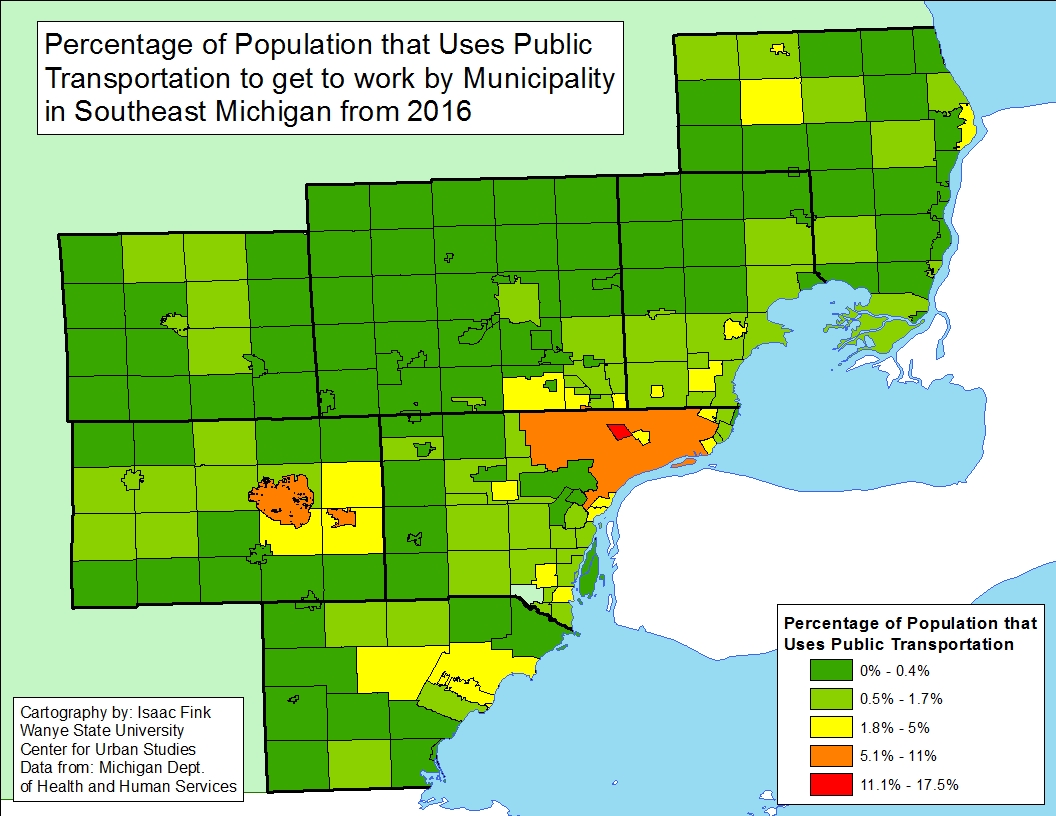Throughout Southeastern Michigan public transportation to get to work is utilized by less than 2 percent of the population in almost every community, according to 2016 Census data. The only community in Southeastern Michigan where more than 11 percent the population utilizes public transportation to travel to work is Highland Park. According to the data, 17.5 percent of the Highland Park population utilized public transportation to travel to work in 2016. It should be noted that Highland Park also has the lowest median income and highest poverty levels in Southeastern Michigan. Additionally, Highland Park has both Detroit Department of Transportation (DDOT) and the Suburban Mobility Authority for Regional Transportation (SMART) stops in the city. Next to Highland Park, Detroit, Ann Arbor and Ypsilanti have the next highest public transportation usage rates for commuting to work, ranging from 5 to 11 percent. These areas also have access to dedicated public transportation systems. For example, in Detroit there is DDOT, which also collaborates with SMART, and in Ann Arbor there is the Ann Arbor Area Transportation Authority.
While there are dedicated public transportation systems throughout Southeastern Michigan, they do not service all of the region. This fact is particularly showcased in the map above; nearly all of the green communities have no or limited access to public transportation. In some areas, like throughout much of Monroe, St. Clair, Livingston and Washtenaw counties, there are no sources of public transportation even offered to community members. While in Wayne, Oakland and Macomb counties access to public transportation is offered, but communities must vote on whether or not to support and utilize the services, such as with the SMART votes (how this service works is detailed here).
Understanding the region’s transit system, or lack there of, is important when reading about the usage of public transportation. When viewing just the numbers it could easily be argued a regional transit system isn’t needed because of the low percentage of users. However, further knowledge on public transportation in Southeastern Michigan shows that there is actually a lack of access, connectivity and education on the economic and community benefits related to public transportation.
